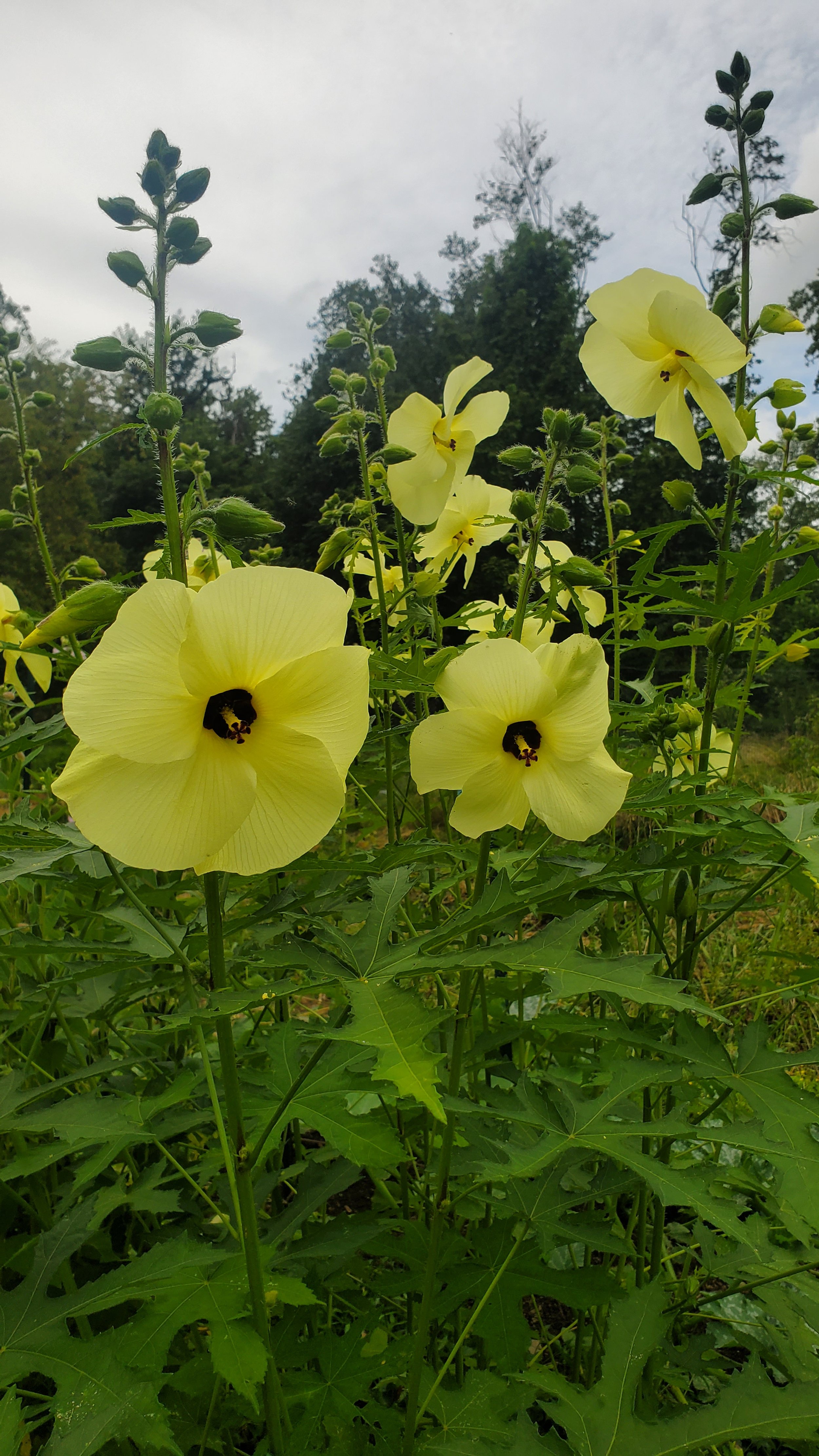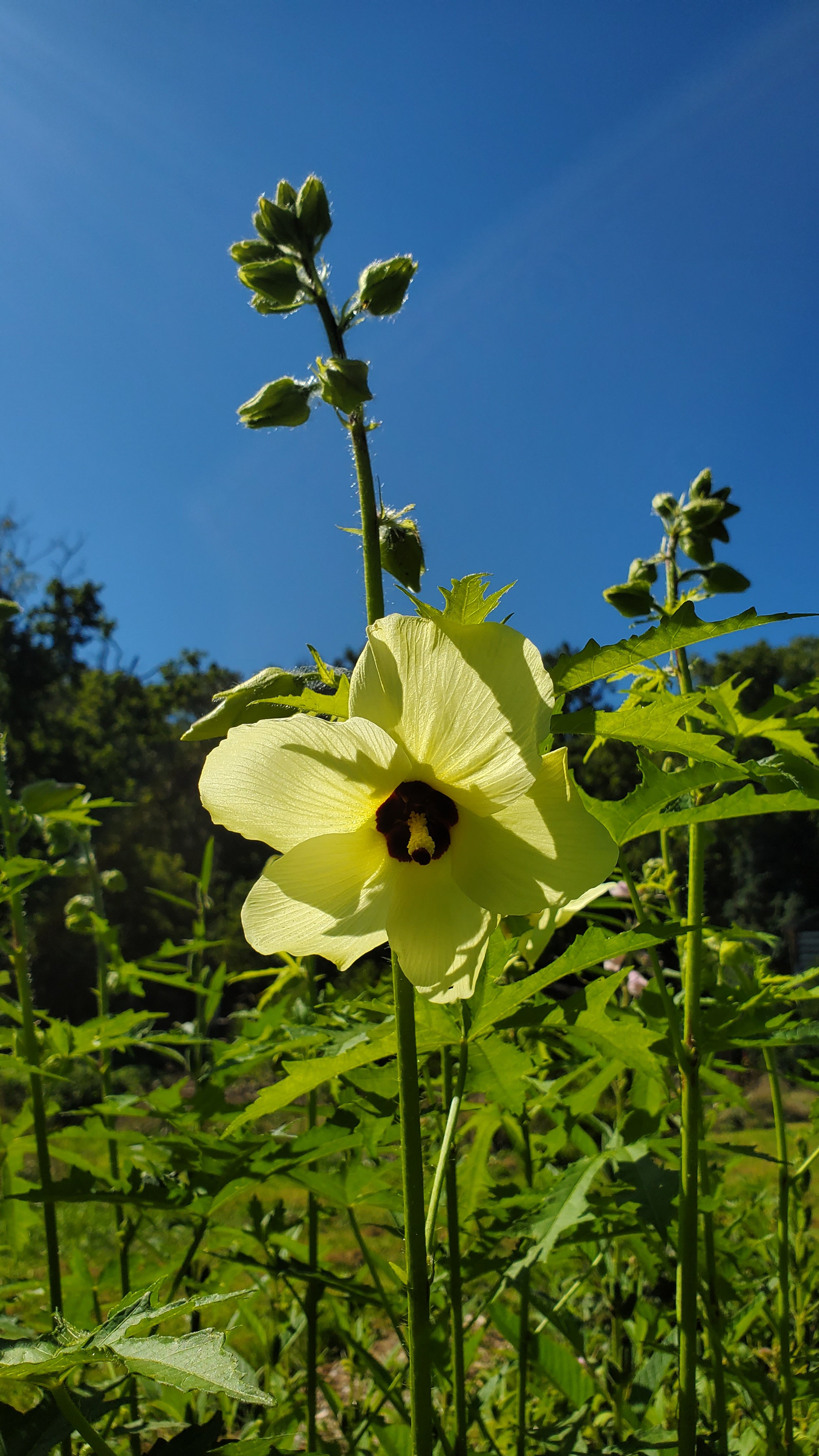 Image 1 of 2
Image 1 of 2

 Image 2 of 2
Image 2 of 2



Aibika -- Korean Silkflower
This beautiful plants comes to me via Yanna Fishman. The botanical name given this species is Abelmoschus manihot (or Hibiscus manihot, in the older nomenclature), or a subspecies of Abelmoschus manihot. This okra-relative has large, sulfur-yellow flowers, which have been used in Korean and Japan in paper making. The leaves are large and palmate, edible, and contain a complete amino acid nutritional profile. I enjoy these tasty greens cooked and in stir fries. Known as Aibika in Papua New Guinea, and another common name is Sunset Hibiscus.
This beautiful plants comes to me via Yanna Fishman. The botanical name given this species is Abelmoschus manihot (or Hibiscus manihot, in the older nomenclature), or a subspecies of Abelmoschus manihot. This okra-relative has large, sulfur-yellow flowers, which have been used in Korean and Japan in paper making. The leaves are large and palmate, edible, and contain a complete amino acid nutritional profile. I enjoy these tasty greens cooked and in stir fries. Known as Aibika in Papua New Guinea, and another common name is Sunset Hibiscus.
This beautiful plants comes to me via Yanna Fishman. The botanical name given this species is Abelmoschus manihot (or Hibiscus manihot, in the older nomenclature), or a subspecies of Abelmoschus manihot. This okra-relative has large, sulfur-yellow flowers, which have been used in Korean and Japan in paper making. The leaves are large and palmate, edible, and contain a complete amino acid nutritional profile. I enjoy these tasty greens cooked and in stir fries. Known as Aibika in Papua New Guinea, and another common name is Sunset Hibiscus.